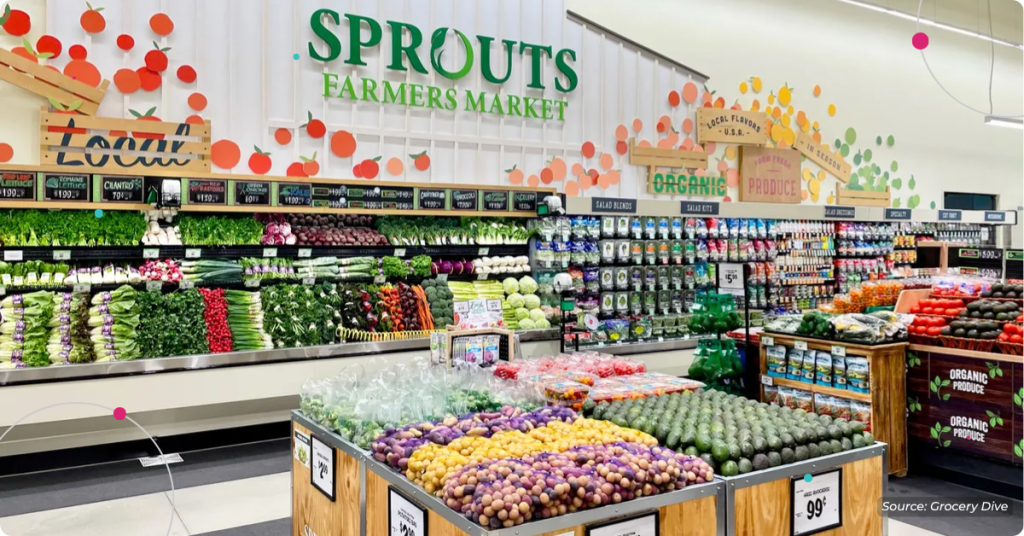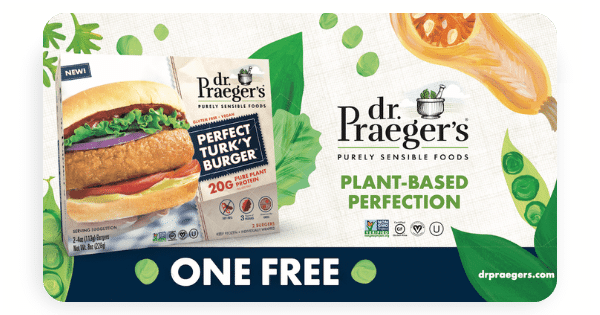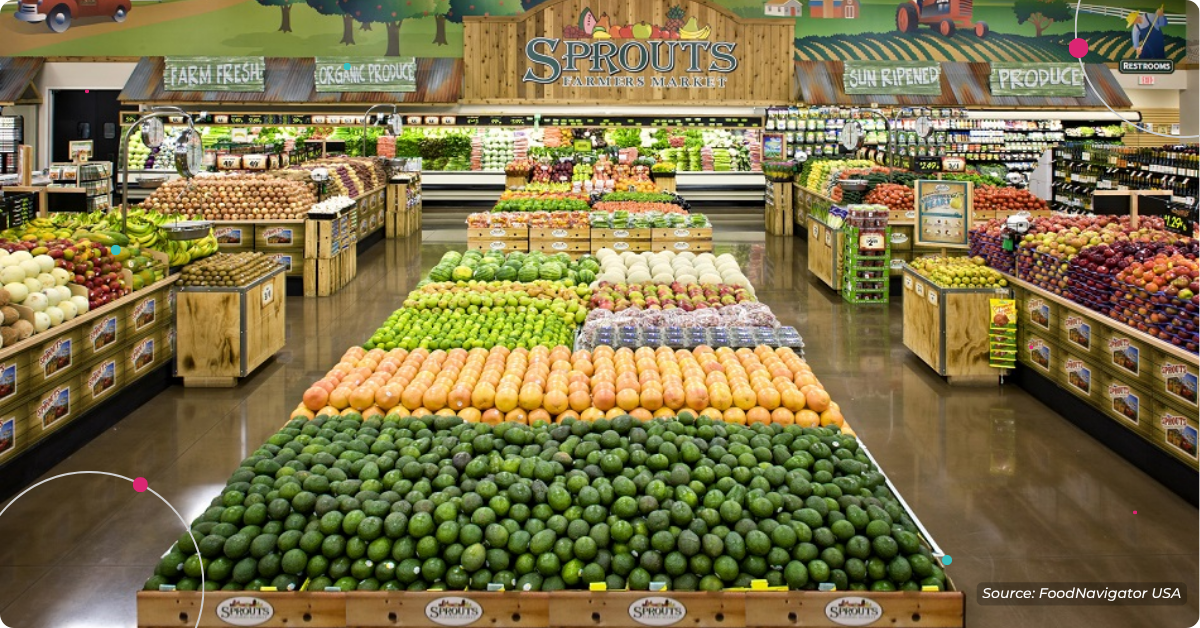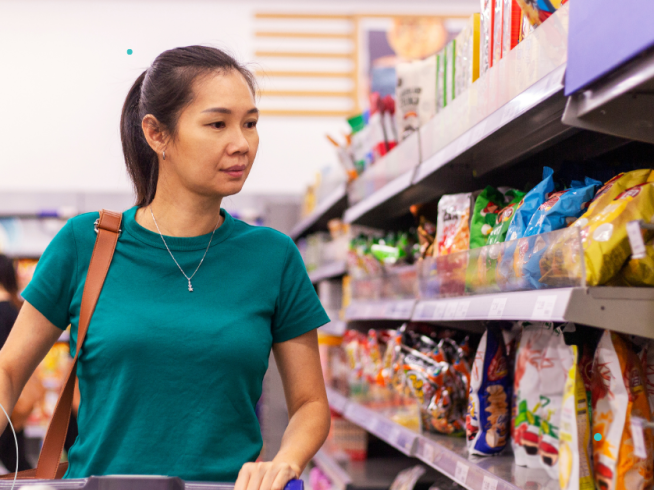For natural CPG brands launching at Sprouts Farmers Market, the first 90 days on shelf are more than just a launch period – they’re an evaluation window. During this time, buyers are looking for early indicators that your product can hold its own and drive sustained performance.
Understanding Sprouts’ unique expectations, especially around velocity, is key to building a strong foundation for a long-term partnership.
Sprouts isn’t just another natural retailer. With a smaller store footprint than conventional grocers, limited shelf space, and a focus on everyday healthy living, buyers at Sprouts are highly selective.
The good news? Less competition within each category can mean higher sale-per-store volume if your product resonates. But it also means new items must prove their value early to earn a lasting spot.

In retail, velocity typically refers to how many units your product sells per store, per week. It’s a core metric that helps buyers gauge demand.
Sales Velocity: The rate at which your product sells in stores. It’s commonly expressed as the number of units sold per store, per time period.
What’s important to understand about Sprouts is that they don’t expect immediate perfection. Instead, buyers are looking for momentum. A new product doesn’t need to meet category averages on day one. But it should show a steady upward trend.
For example, if the average for a condiment category is 2.4 units per store per week, a new product may begin at 1.3 or 1.5. If it’s trending upward (to 1.7 or higher over the next few months), that’s a positive sign. Sprouts is more interested in your trajectory than in where you start.
Over time, the goal is to perform at or near the category average, typically within the first year.
Velocity benchmarks aren’t one-size-fits-all. For out-of-the-box products like SAYSO’s tea-based cocktail mix, Sprouts buyers may apply more flexible expectations. If your product fills a gap in the assortment and meets a specific shopper need, that context matters.
In these cases, clearly communicating your point of difference and target audience becomes even more important.

Launching in-store is just the beginning. To perform well in the first 90 days, Sprouts expects brands to back up their listings with a sell-through plan. While deep discounting isn’t always allowed, especially for products on the innovation display, there are still effective ways to drive trial and sales:
1. In-store demos
Consumers often hesitate to try unfamiliar products. A demo lets them experience it risk-free, increasing initial trial and purchase. This is especially effective when specific cooking instructions are required.
2. Digital sampling platforms
Targeted sampling through platforms like Social Nature allows brands to reach high-intent shoppers, gather reviews, and track redemption and velocity impact. These campaigns not only boost awareness, they also provide measurable ROI.
3. Instacart advertising
Sprouts partners with Instacart for delivery, making it a key platform for retail media. Instacart allows precise geographic targeting and performance tracking – valuable tools for any launch.
4. Influencer and creator partnerships
Working with local influencers or micro-creators can amplify awareness in key markets. These partnerships often feel more authentic and can be activated cost-effectively through product seeding or digital couponing.
Sharing these initiatives with your Sprouts buyer demonstrates that your team is invested in driving demand, not just waiting for sales to happen automatically.
One of the advantages of Sprouts’ innovation program is access to weekly, store-level data. This includes your own sales performance as well as comparative data across other innovation items, giving you valuable insight into how your product is performing within the set.
While larger brands may rely on syndicated data from SPINS or Nielsen, the reporting Sprouts provides is often more immediate and actionable. Use it to optimize your support tactics, identify strong regions, and inform future conversations with the Sprouts buyer. Pro tip: Use these insights as leverage to open more retail doors.
It’s common for emerging brands to underestimate the marketing investment needed during a retail launch. In practice, brands should plan to allocate 20–25% of revenue toward marketing in their first year at Sprouts, higher than the ~15% more established brands might spend.
Why the increase? Because trial doesn’t happen on its own. Between sampling, demos, paid media, and shopper education, early investments are what drive the awareness and velocity Sprouts expects to see.

Landing on shelf at Sprouts is a meaningful milestone. But staying there (and growing) requires a clear understanding of what buyers want to see in those first 90 days:
- Steady velocity growth, with a path toward the category average
- A defined support plan to drive trial and awareness
- Strategic use of data and insights to make quick, informed decisions
- Realistic budgeting that reflects the work required to succeed
With the right approach, brands can not only meet Sprouts’ expectations but also use their success as a springboard to grow across other retail channels.
For more advice on succeeding at Sprouts, check out our webinar The Sprouts Success Playbook.




